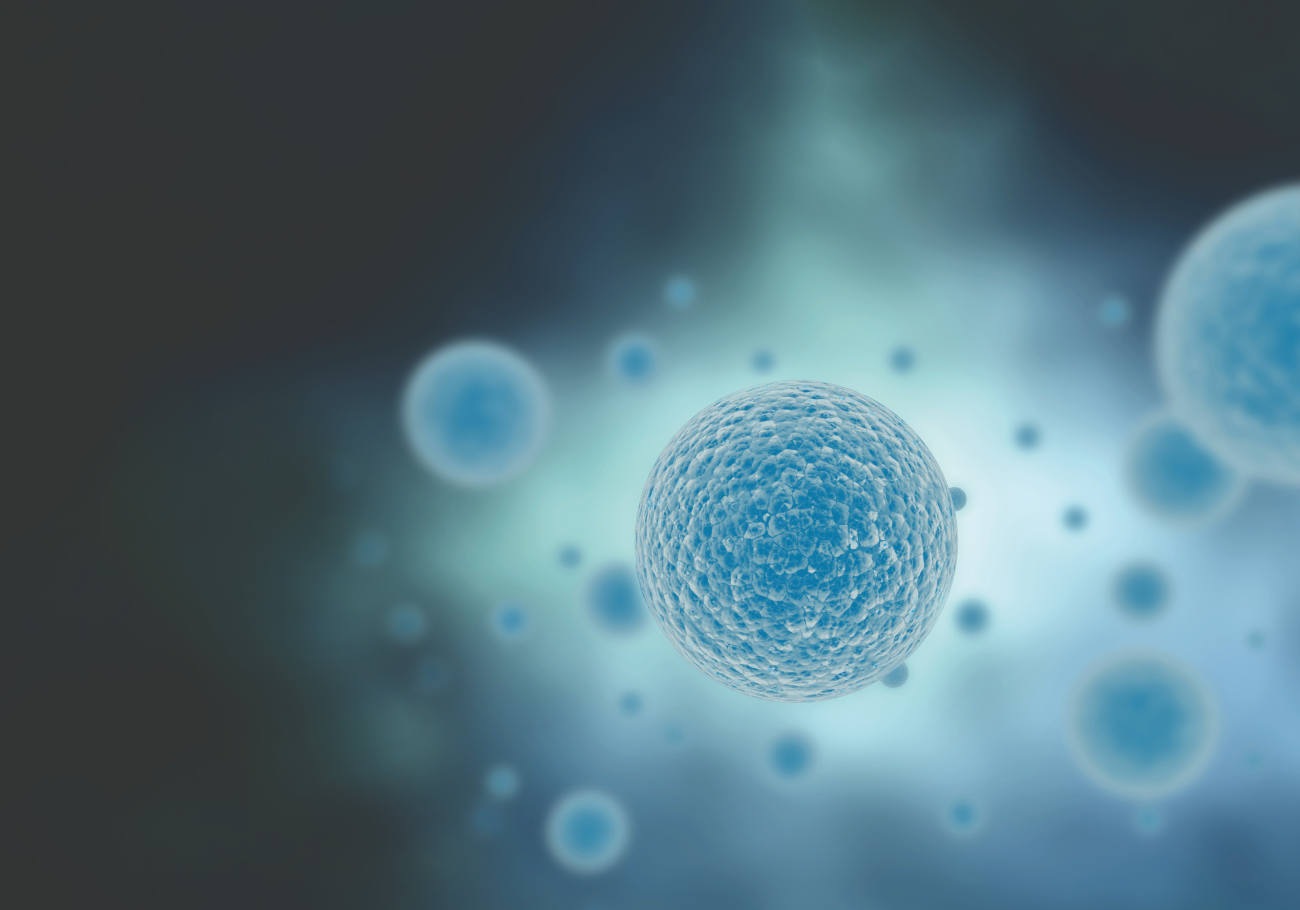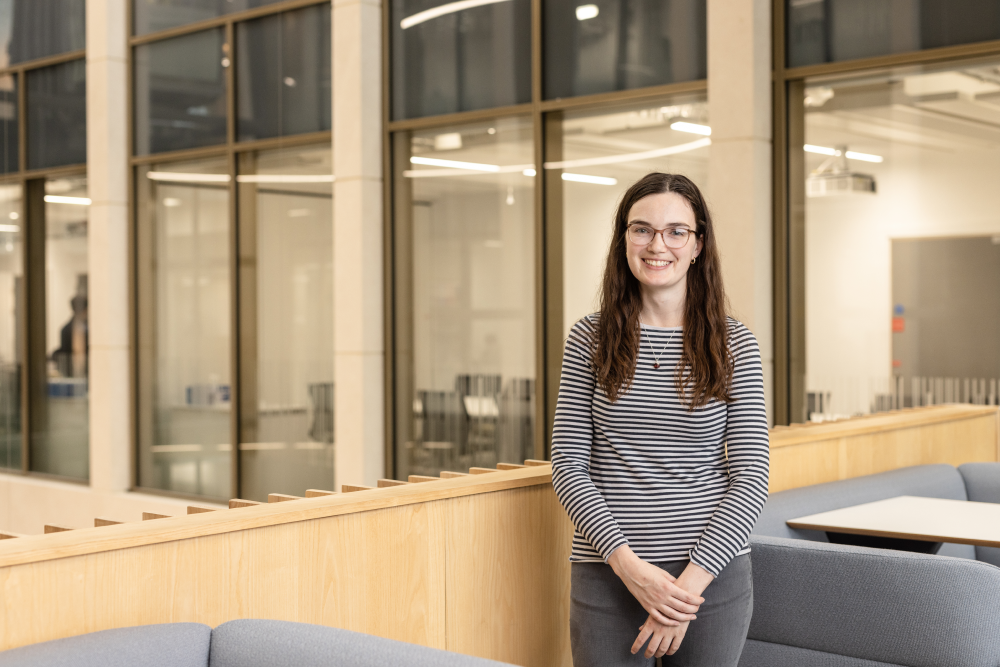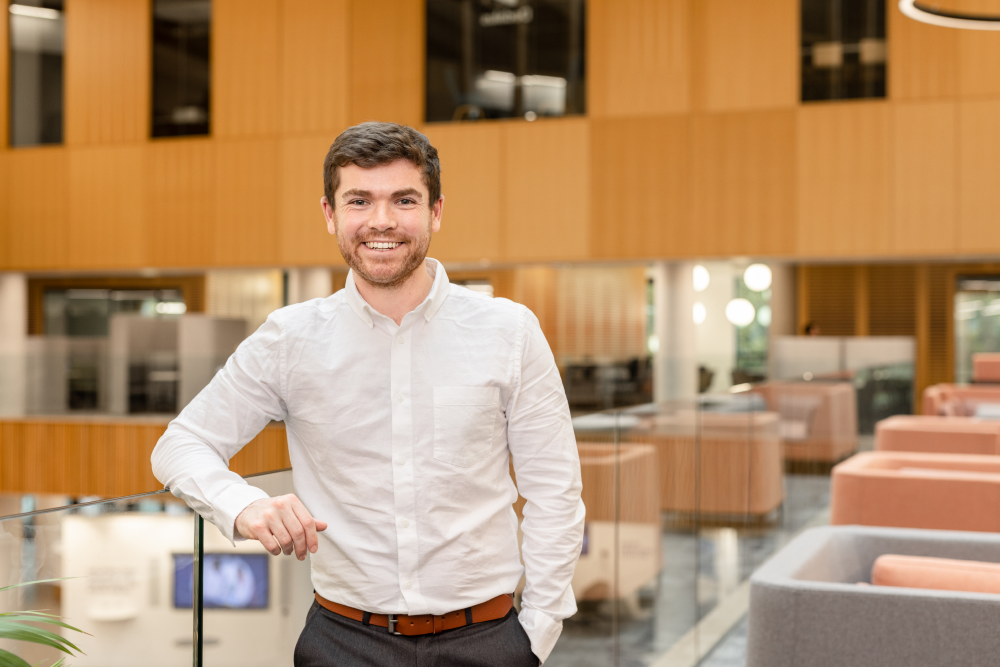Seeking answers in our cells

Postdoctoral researchers Amanda MacCannell and Chris Trevelyan are the first recipients of a new fellowship targeted at addressing major medical challenges.
Could a protein that our body naturally makes be the key to preventing muscle loss in people who can’t exercise? Could tiny loops in our cells be harnessed to treat liver cancer? A fellowship funded by a Leeds alumnus aims to answer these questions, and more.
The ten-year Summerhayes Fellows programme, funded by Clive Summerhayes (Civil Engineering and Industrial Relations 1962) will give brilliant postdoctoral researchers the opportunity to take a fresh approach to age-old medical questions.
The first two fellows, Drs Amanda MacCannell and Chris Trevelyan, began their work last year.
They are examining life at the molecular level, using the remarkable armoury of research tools in our Faculties of Medicine and Health and Biological Sciences to gain an understanding of the cellular processes driving medical conditions. Our close partnership with Leeds Teaching Hospitals Trust gives them access to patient groups, blood and tissue samples – and the expertise of clinicians whose working lives are driven by a passion to help people beat life-limiting diseases.
As newly-qualified PhDs, Amanda and Chris are at a career stage where only limited opportunities may be available, and where institutions can lose outstanding talent. Clive’s support will ensure that these exceptionally talented young academics remain at the University: “I’m keen that we retain our finest homegrown talent,” he says. “It’s really important to create and nurture a pipeline of very talented researchers who are equipped to tackle our most significant health challenges.”
The benefits of exercise – in a drug
Amanda MacCannell’s research could one day lead to a drug that replicates the benefits of physical exercise.

The benefits of an active lifestyle are well known – from reduced weight and stronger muscles through to improved fitness and mental wellbeing.
There are clear medical benefits too, with physical exercise contributing to lower blood pressure and the prevention of muscle wastage. Exercise supports our recovery from illness and helps prevent the onset of conditions such as type-2 diabetes, cardiovascular disease, and even some cancers.
In contrast, people who have more sedentary lives – often because they have conditions which prevent them exercising – take longer to recover from illness and may be more vulnerable to these life-limiting diseases.
Without this support I probably wouldn’t be here.
Amanda is focused on the molecular processes at work when we exercise, in the hope of sharing these benefits with disabled or bed-ridden people unable to enjoy an active lifestyle. “If we can figure out the molecular signals which give us the beneficial effect from exercise, we could design a drug to target and replicate them,” she says.
Amanda is examining a protein called LRG1, which is secreted from the liver and from fat tissue – and is closely linked to physical activity. “We need this protein for our muscles to function, and sedentary patients have less of it than active patients,” Amanda explains. “We don’t know why – it could be that exercise helps us produce more LRG1, or greater levels of it encourage us to exercise.”
During her PhD, Amanda found that mice without the protein exercised around 80 per cent less than those with normal levels of the protein.
By studying the nature of the protein and what it does in our cells, she is exploring whether it could be harnessed to prevent muscle wastage and disease for those who don’t exercise. Potentially, a drug could prompt the body to synthesise more of the protein: “If we can get the body to increase LRG1 production, it can go into the bloodstream to do its work.”
To reach that point, Amanda must delve deeper into the protein’s behaviour at the molecular level, to understand how it interacts both within cells and the entire human body.
The work also draws on the partnership with Leeds Teaching Hospitals Trust, giving Amanda easy access to blood and tissue samples for use in her research – and to people being treated for conditions such as diabetes and heart disease. “This opportunity has allowed me to explore research only available in Leeds,” she says.
Unlocking the secrets of a deadly cancer
Liver cancer is responsible for about 5,800 deaths a year in the UK. Chris Trevelyan’s research is focused on its early diagnosis and treatment.

Many people who develop the cancer already have a liver disease such as hepatitis or cirrhosis. Often the symptoms of these are so similar that the patient fails to realise their condition has changed – and so may not come forward, or may not be referred for cancer testing. Even when tested, diagnosis among men can be slow because the biomarker currently used for liver cancer also indicates testicular cancer.
My research would be impossible without the expertise of Leeds Teaching Hospitals and the cutting-edge research facilities at the University.
Central to Chris’s work is ribonucleic acid (RNA) which delivers instructions held in our DNA to create the proteins that run biological processes at work in the body. “What we’re experiencing in science at the moment is an RNA boom,” says Chris. “They’re fundamental to how our bodies work, yet we know relatively little about them.”
Most RNAs are unstable, which makes them difficult to study in real time. They are linear in structure and can change when other biological materials adhere to them.
By contrast, Chris is studying tiny biological loops called circular RNA (circRNA) in the hope that these could open the door to quicker diagnosis and new treatments for liver cancer. Their shape makes them less penetrable, more stable – and more straightforward to research.
Looking at liver cancer patients undergoing treatment in St James’s University Hospital, Chris is searching for a marked difference in circRNA levels between those who respond to the treatment and those who fail to do so. Chris can link up-to-date details about treatment methods and the disease’s progress in hospital patients to the samples he studies in a University laboratory.
If Chris finds that circRNAs are biomarkers for liver cancer, they could unlock a simple, quick and non-invasive way to spot a disease that is currently difficult to diagnose. Blood, urine or saliva could be screened in clinics or GP surgeries, instead of patients waiting for an invasive biopsy.
The research could one day go further. By manipulating what they do naturally, circRNAs could be harnessed to offer a more accurate personalised prognosis of the disease – and even deliver new treatments.
When you support the University of Leeds, you play a vital role in supporting our University’s outstanding research and education.
If you would like to give to Leeds, please visit our giving page.